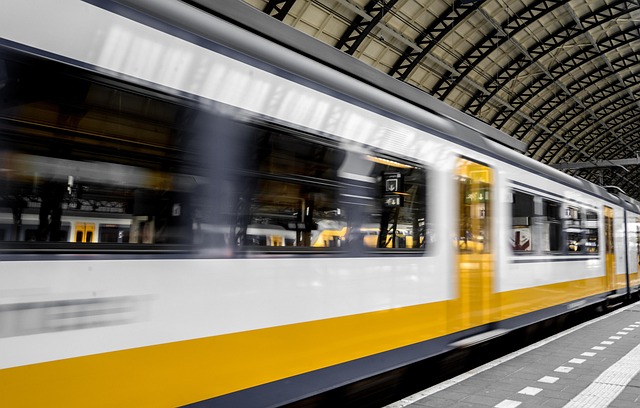Reducing Urban Congestion Through Smart Routing and Demand Management
Urban congestion reduces the efficiency of mobility, increases emissions, and makes commuting less predictable. Smart routing combined with active demand management can reshape how people and goods move through cities by improving timeliness, accessibility, and connectivity across modes while supporting sustainability and improved logistics operations.

Urban congestion presents operational and social challenges that affect timeliness, accessibility, and sustainability across cities. Smart routing and demand management provide complementary tools: routing reduces wasted movement by directing vehicles and travelers along optimized paths, while demand management smooths peak loads and shifts travel behavior. Together these approaches influence commuting patterns, fleet operations, and broader infrastructure decisions.
How does routing improve mobility and timeliness?
Smart routing leverages real-time data, historical traffic patterns, and predictive models to reduce delays and improve mobility. By recalculating routes based on congestion, incidents, or planned events, routing systems can shorten travel times and increase network throughput. For freight and logistics, optimized routing reduces idle time and fuel consumption, while for public transport it can help maintain schedule adherence and improve passenger timeliness.
Routing systems are most effective when integrated with traffic signal control and multimodal information. When routing decisions consider timeliness and connectivity across buses, trains, and micromobility options, they contribute to a more resilient urban mobility network and better utilization of existing infrastructure.
What demand strategies affect commuting and accessibility?
Demand management includes measures such as congestion pricing, flexible scheduling, staggered work hours, and incentives for off-peak travel. These strategies aim to flatten peak demand, improving accessibility for those who must travel during peak periods and reducing the marginal impact of each trip on congestion and emissions.
Effective demand management must balance equity and accessibility. Pricing signals or restrictions need accompanying alternatives—such as improved public transport scheduling, fare concessions, and targeted subsidized services—to ensure that lower-income commuters retain access to essential travel.
How can intermodal connectivity and ticketing help?
Intermodal connectivity and integrated ticketing simplify transfers between modes and reduce perceived travel friction. When schedules, ticketing systems, and real-time information align, passengers can combine services—such as bus-to-train or bike-to-rail—more confidently, improving overall system accessibility and reducing reliance on private cars.
Modern ticketing solutions that support single-payment systems and digital passes improve user experience while enabling operators to implement targeted fare policies that encourage off-peak travel or multimodal trips, strengthening connectivity across the urban transport network.
How do analytics optimize fleet, scheduling, and logistics?
Analytics applied to fleet operations and scheduling produce insights that enhance efficiency. Data on vehicle locations, dwell times, passenger loads, and historical demand enable dynamic scheduling and smart dispatching, reducing empty trips and improving fleet utilization for both public transit and private logistics fleets.
Predictive analytics help planners anticipate demand shifts and adjust capacity or routing proactively. For logistics providers, analytics can optimize last-mile routing, consolidate deliveries, and support intermodal handoffs that lower costs while improving sustainability outcomes.
Can infrastructure and sustainability goals align with routing?
Smart routing and demand management can extend the usable life of existing infrastructure by reducing peak stress and concentrating investments where they yield greatest benefit. Prioritizing transit lanes, adaptive signal control, and dedicated freight corridors supports more predictable routing and better connectivity between hubs.
Aligning routing with sustainability goals means routing that minimizes fuel consumption and emissions, encourages shared mobility, and integrates low-emission modes. Infrastructure decisions that facilitate intermodal transfers and active travel modes amplify these sustainability gains while addressing long-term urban logistics needs.
What are typical fare and cost considerations for users?
Fare structures and cost signals are central to demand management. Transparent pricing that reflects costs and externalities can redistribute travel demand, but it must be implemented with equity safeguards. Agencies and providers consider operational costs, subsidy levels, and policy objectives when setting fares and concessions.
Below is a comparison of representative services and typical cost estimations that illustrate how pricing varies by mode and region.
| Product/Service | Provider | Cost Estimation |
|---|---|---|
| UberX (short urban trips) | Uber | Estimated $8–20 per trip in many U.S. cities depending on distance and surge pricing |
| OMNY single ride (subway/bus) | MTA (New York) | $2.75 per ride (standard single fare) |
| Contactless / Oyster single trip | Transport for London | Typical single fares £1.65–£3.50 depending on mode and zones |
Prices, rates, or cost estimates mentioned in this article are based on the latest available information but may change over time. Independent research is advised before making financial decisions.
When comparing these options, note that public transit fares are often lower per passenger-mile but may require time trade-offs; ride-hailing offers convenience and connectivity but at higher per-trip cost. Fare policies, caps, and integrated ticketing can alter these dynamics and shape commuter choices.
Smart routing and demand management together create mechanisms that can reduce congestion while preserving accessibility and advancing sustainability. By combining routing algorithms, analytics, adaptive scheduling, intermodal ticketing, and targeted pricing, cities can improve timeliness and connectivity without relying solely on new infrastructure. Thoughtful implementation—grounded in data and equity considerations—helps align operational efficiency with public goals for mobility and environmental performance.





